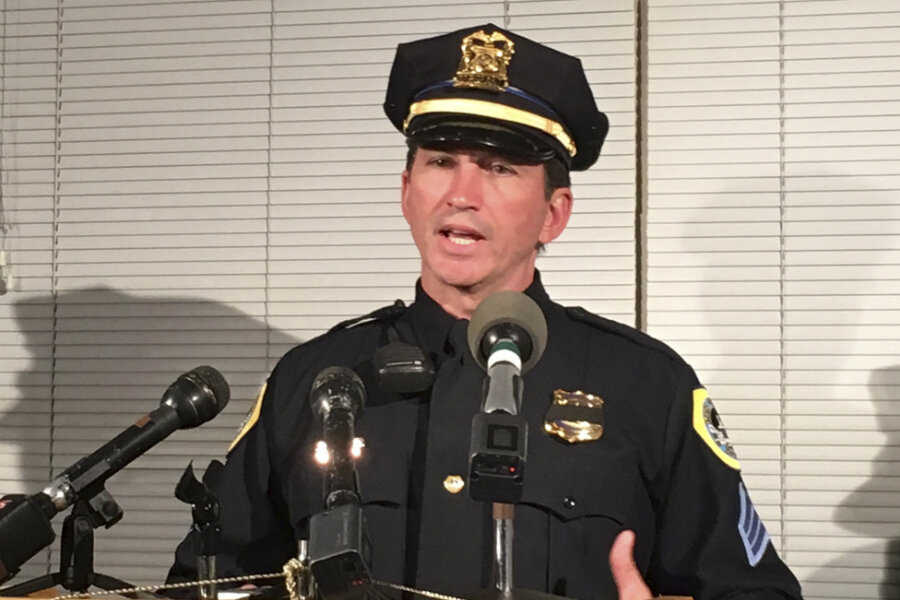Scott Michael Greene: Suspect captured in Iowa police 'ambush'
Loading...
UPDATED: 11:20 a.m. Wednesday
Two police officers in Des Moines, Iowa, were killed in ambush-style attacks early Wednesday morning 20 minutes apart.
While the suspect's motives are still unknown, the officers were both shot while sitting in their patrol cars about two miles apart "doing nothing wrong," according to the Des Moines police department.
Officers from the Dallas County Sheriff's Office and Iowa State Patrol captured the primary suspect, 46-year-old Scott Michael Greene, and were taking him to Des Moines, police said.
His arrest came about eight hours after the killings of two officers.
Police said in a statement Wednesday that the prime suspect is Mr. Greene of Urbandale. He was described as white, 5 feet 11 inches tall, 180 pounds with brown hair and green eyes. He seen to be driving a blue 2011 Ford F-150 pickup truck with Iowa license plate 780 YFR.
The incident has police on high alert, especially after the two deadly attacks on police in Baton Rouge, La., and Dallas, Texas, in July that left eight officers dead. The gunmen in those attacks allegedly carried out the acts as retaliation for police brutality against minorities. As a result, tensions are running high and increasingly straining the police-community relationship as some opportunists, stoked by frustration, invoke violence on officers.
Iowa has seen some cases of alleged police brutality and peaceful Black Lives Matter protests against discrimination by law enforcement officers on African-Americans, but it hasn’t had any high-profile cases of violence. According to the Des Moines Register, this is the first time officers have been shot and killed on duty in Des Moines since 1977.
Ambush attacks on police have actually declined in recent decades, as The Christian Science Monitor reported, based on data by the National Law Enforcement Officers Memorial Fund:
While closely tracking fatalities is valuable, they say, increases over a brief period shouldn’t be confused with the larger trend: shootings of police have declined dramatically since a high in the 1970s, driven in part by changes in policing, such as the use of body armor.
But the recent incidents – and other attempts for ambush that were foiled – leave officers concerned for their safety.
In Baton Rouge, La., police in July arrested three suspects accused of stealing handguns in a burglary attempt to “harm police officers.” In March, a shooter fired on a police station in Maryland, killing one officer in an unprovoked ambush.
The Dallas ambush, seen as the deadliest incident for police officers since the 9/11 terrorist attacks, occurred when a gunman opened fire at 12 police officers during a peaceful protest after voicing anger over fatal shootings of African-American men by white police officers in Louisiana and Minnesota.
Police are pairing up in regular patrols even for routine calls in some cities as a response to these attacks. In some cases, they justify the use of riot gear and military-style vehicles to deal with potential violence – possibly further aggravating the police-community tension.
"We've had a police officer with teeth knocked out of his face because of a rock. If you don't have on riot gear, you have no defense against that sort of thing," Louisiana Gov. John Bel Edwards said in July after the Baton Rouge shooting. "In light of what happened in Dallas, understanding that just one gunman can change the situation entirely, how do you in good conscience put police officers on the street without the ability to defend themselves?"
Material from The Associated Press was included in this report.








